Did you know that there are many different types of tomatoes all over the world? There are more than 10,000 types of tomatoes available, but you probably love only a few of the 40 most common tomatoes found at your local grocery store.
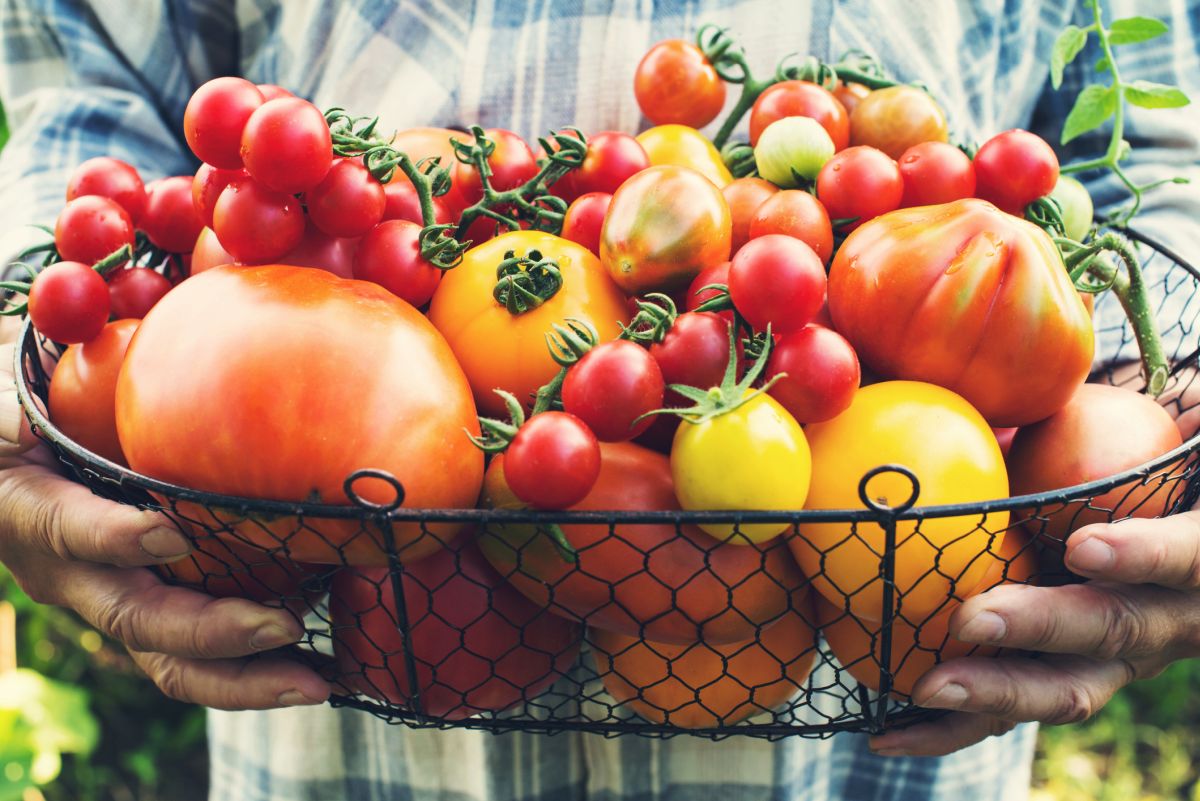
Tomatoes: Fruits or Vegetables
The age-old question finally gets a definitive answer: tomatoes are a fruit. There are a few reasons why you might not have considered it to be a fruit.
The most common reason people confuse this red fruit with veggies is that it is not sweet, at least not in the same caliber of sweetness as most other fruits you might love.
Fruit is ripened by the fertilized ovary of a plant, and has seeds on the inside, whereas vegetables do not.
From a culinary perspective, veggies are blander with a more bitter profile and tomatoes are often used alongside true veggies such as beet.
So, scientifically speaking, they’re a fruit, but if you’re talking to a chef, they’ll use it as a vegetable.
Categories for Different Types of Tomatoes
You might have heard many interesting words accompanying your tomato of choice, such as determinate or indeterminate, or the most common one, heirloom. There is a method to this naming-madness
Determinate
All tomatoes are either determinate or indeterminate, no matter what other classification they might have. Determinate simply means, the plant grows up to a certain height or length, and then produces fruits at the ends of the vines or stems, all at once.
These types of tomatoes are perfect for bulk farming or for someone who wants all their fruits at once. The plants can’t be pruned, since you will cut off the growth points if you do, rendering your plant fruitless.
Indeterminate
These are simply the opposite of determinate tomatoes and are plants that never stop growing. They produce fruits along the vines during the growing season.
This is ideal for home-growers that require smaller amounts of the ripened fruit throughout the season than opposed to all at once, eliminating the possibility of wood wastage.
These plants are also okay with pruning, since they produce fruits all along the vine, pruning them to shape won’t stop you from getting fruit.
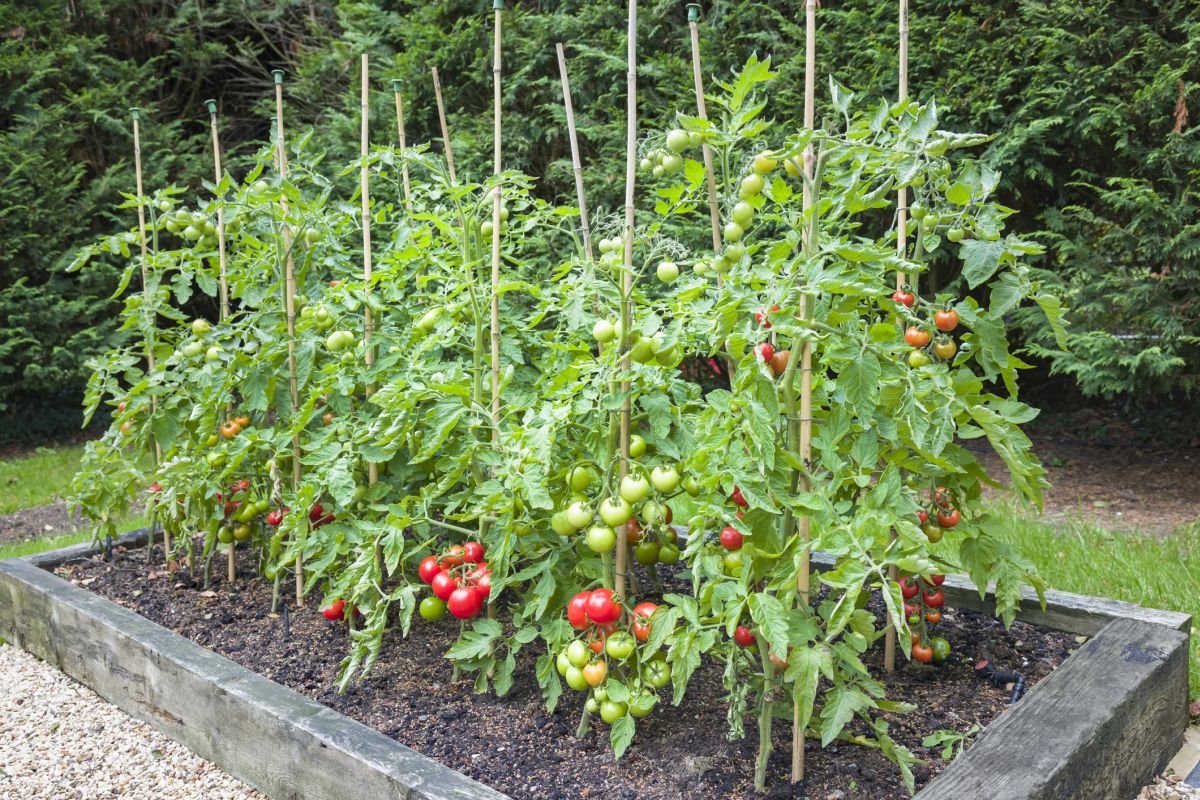
Heirloom
The term heirloom is given to any plant, not just tomatoes, that has remained unchanged for at least 50 years, meaning no cross-breeding of varieties has taken place.
This is an advantage if the tomato plant is used for specific applications and you don’t want to lose the qualities by cross-breeding it with any other tomato plants.
Hybrid
Hybrid tomatoes are the result of cross-breeding two other types of tomatoes who could be heirloom or hybrid. The result is a plant that possibly has the best trait of the two ‘parent’ plants and thus offers better results than that of the ‘parent plants’.
You can create hybrid tomatoes organically or through genetic modification.
How to Identify the Different Types of Tomatoes
You won’t easily be able to differentiate between heirloom and hybrid tomatoes without help from very expensive technology, but you might be able to easily identify whether they are determinate or indeterminate.
Identifying Types of Tomatoes Instructions
Check Your Seed Packets
Check the marker or seed packet, it might seem obvious but it would be indicated on your packet whether it is indeterminate or determinate. You can see on here if it is an heirloom or hybrid too.
Look Closely At The Leaves
An interminate tomato plant’s leaves are spaced out far apart and have a vine-like appearance, whereas a determinate tomato plant’s leaves are closer together on the stems, making them appear bushy.
Keep an Eye on the Flowers
If the plant flowers all at once, all the fruits will appear at once, making it a determinate plant.
If it makes flowers even after the plant has beared some fruit, you can tag it as indeterminate.
Height is Key
This is the best indicator for you to spot what type of tomato plant you have, check the height of the plant. A determinate tomato plant is short and stocky, not reaching heights over 5 feet.
Indeterminate plants grow quite tall, and require proper support, as they can reach heights of 8 feet or more.
How to Care for a Tomato Plant
If you’re trying your hand at gardening, good for you. Here are some tips when it comes to the basic care of a tomato plant.
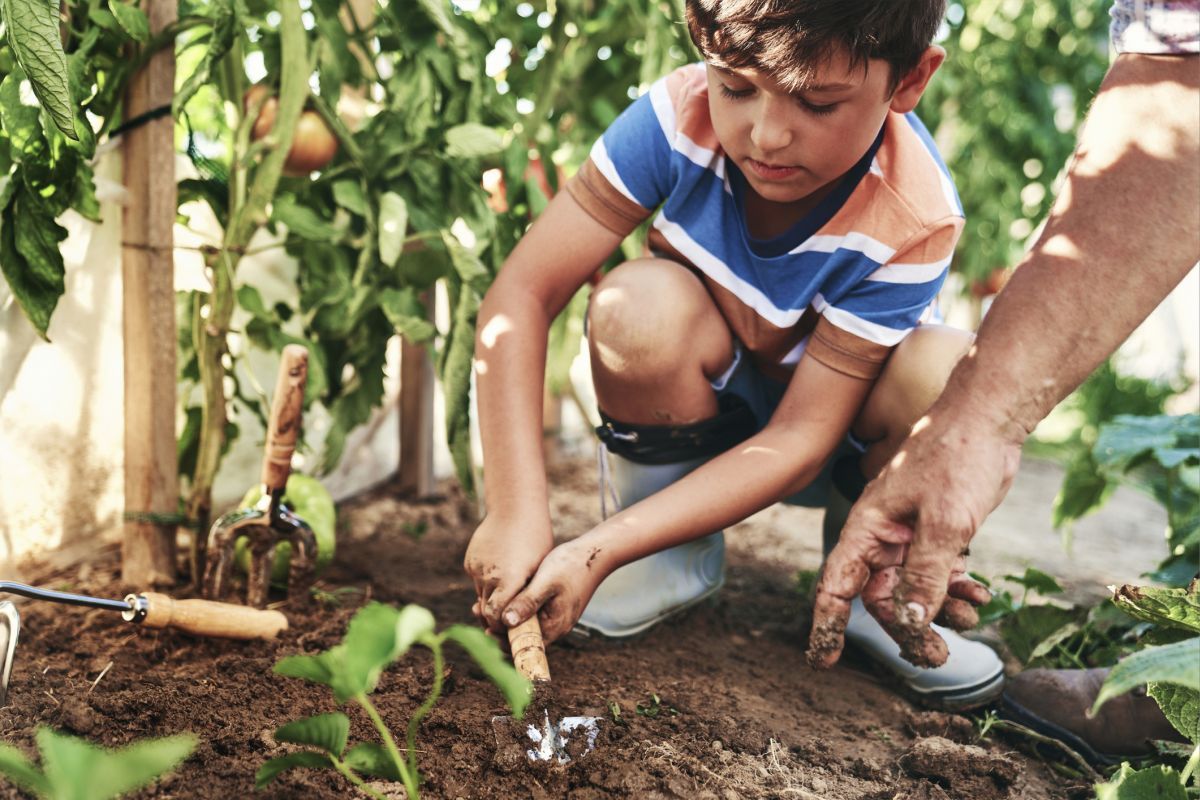
Light
For best results, tomatoes require at least 12 -16 hours of direct sunlight per day to produce fruit, with a minimum of 8 hours. A tomato plant flowers regardless of the length of the day, as it is day-neutral.
Watering
Bear in mind that if you grow tomatoes in a container, you will need to water them more often than if you plant them directly into the soil. Seedlings need water more often than fully grown plants.
Fully grown tomato plants require 1-2 inches of watering daily, and it is best to do so in the mornings and feel in the afternoon if the soil is dry by sticking one finger in the soil to check how dry it is.
If your finger comes out with moist soil stuck to it, no need to water more, if it is bone dry, add a bit more water.
Soil
The best soil for tomatoes is sandy loam soil, so it can drain well but keep moisture in long enough for your tomato plants to have a good drink of water. They also need neutral PH soil, measure your soil before sowing to check if modifications are required.
Temperature
Although tomatoes thrive in a large range of climates, the ideal temperature to grow them in is between 55 and 85 degrees Fahrenheit. They grow in summer, so sow in spring and harvest at the end of summer.
If temperatures get too hot, make sure your plant is well hydrated, and if it falls too low, your plant might go dormant or die.
Humidity
The ideal range of relative humidity is between 65% and 85%. Anything higher than 85% and pollination might not be able to occur since the pollen will clump. Anything lower can be rectified with misting often when it’s hot and dry.
Fertilizer
You can keep it accessible by grabbing a fertilizer meant for tomatoes at your local nursery, but if you prefer to boost one part of the plant more than the other depending on your needs, have a chat with the nursery about it.
Ideally, you would always want to add a high phosphorus fertilizer to your plants bi-weekly since it stimulates fruit growth. But remember, it’s always better to under-fertilize than to over-fertilize since it can burn your plants.
How to Grow Types of Tomatoes
Growing tomatoes are quite easy if you have some good tips to keep in mind, and they do well in containers, so anyone can grow them, even if you don’t have a garden bed.
Instructions to Propagate Types of Tomatoes
Tomatoes are annual plants, and they only grow during summer, so by this standard, propagation might be tricky if you don’t do it perfectly, and have a hothouse to stimulate a warmer climate. But it is not impossible, here’s how
- Cut unwanted or excess stems as close as possible from where they branched out, off of the mother plant
- Place them in a glass of water, which you will have to change weekly with fresh water. Place the glass on a sunny windowsill or in your greenhouse
- After a few days, they will have roots, and when the roots are an inch or two long, pot them up in the soil. They will bear fruit a bit later in the season if temperatures allow for it.
Instructions on Sowing Tomato Seeds
Growing from seed is the easiest way of growing tomatoes year after year. The best time to start is a couple of weeks after your frost date in your area if you direct sow into the garden bed, or if you’re starting indoors, 3-4 weeks before your average last frost date.
- Get some starter soil mix, ideal for seed sowing, and sprinkle a few seeds in. make sure to add in more seeds than you think might fit the pot or area, since some seeds may not start. Starter soils also contain enough fertilizer for your seedling to have a fighting chance.
- Wet the soil and place it in a sunny spot or greenhouse until sprouted. You can use cling film a few inches above the container if it allows, you to stimulate a greenhouse if you haven’t got one.
- Transplant them when they are about 6 inches high into their final spot or pot if you started in a seedling tray.
Common Problems With Tomato Plants
Growing tomatoes are quite easy if you sow them at the right time and give them support to keep them upright, but planting them out of season may not only hinder their growth but allow pests to get the better of them. Here’s how to keep common problems with tomatoes at bay.
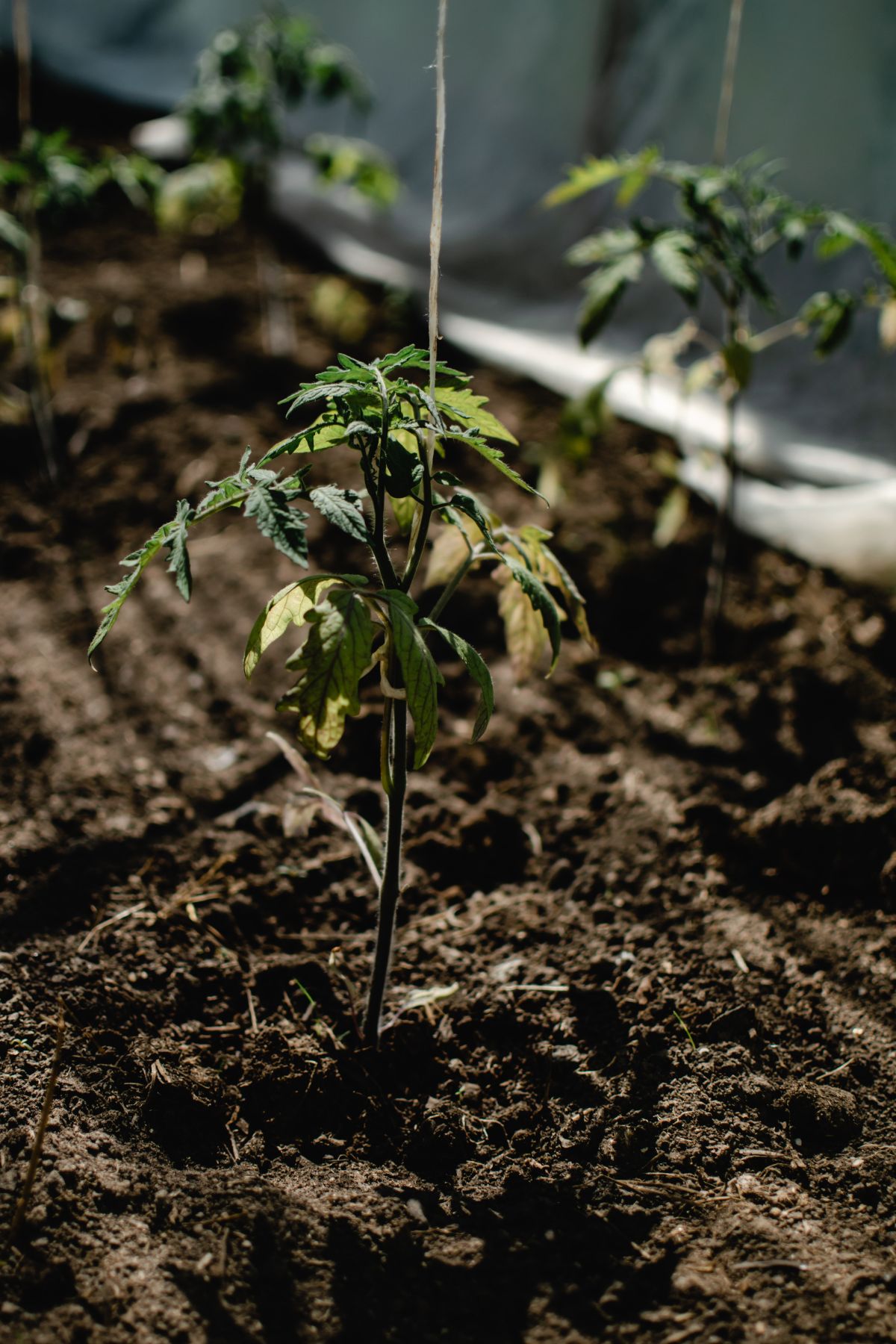
Pests
Pests come in many shapes and forms but resorting to chemicals should be last on your list. There are plenty of ways to fight off common pests, naturally.
- Aphids. A small green or dark-colored insect that crawls up and down your plant, usually close to the growing points. Spray them off with water or a Castille soap solution to keep them from returning or plant companion plants that attract ladybugs, to which these aphids are a delicious snack.
- Blister Beetles. These are rather large insects and an infestation can be prevented by picking off the few that start off on your plants, just use gloves. Else make sure birds can get to your plants as they love to munch up these beetles, or use an organic biopesticide if a massive infestation has occurred.
- Cutworm. These large worms usually dwell in the soil, clipping your plant of all its roots, and killing off seedlings, but they munch on mature plants too. They are very easily combated by making a cardboard collar to go around the base of your plant, against the soil to smother them out.
- Animals that eat your fruit. Rabbits, warthogs, and many other small or large animals may visit your garden to eat your delicious fruit, keep them at bay with netting or fences, just make sure they won’t harm or catch the animal keeping them trapped and stressed.
Leaves
Other than pests, some common leaf problems might arise with your tomato plants. It’s essential to take care of the leaves since they are very necessary to grow good fruit too. Tomato plants can, however, survive if it loses up to 30% of their leaves.
- Powdery mildew. This often occurs when it is dry and warm and is seen when the leaves turn yellow. Upon closer inspection of the yellow spots, you will find a white-grayish powder. You can use an organic fungicide to rid the plant of this or try a garlic solution you can make at home.
- Phosphorus Deficiency. This is as simple as it sounds, the plant is not getting enough phosphorus through fertilizer. It can be recognized by the leaves turning a deep purple. Cut off any extensively damaged leaves and fertilize your plant with a high phosphorus fertilizer.
- Salt Damage. This happens when the quality of your water is poor, your tomato plant’s leaves turn yellow and eventually fall off. Select salt tolerant varieties or try to rectify your water source by filtering if you can’t find a replacement source.
Roots
Root problems are a bit more tricky to spot since you can’t see the roots underground and you don’t want to disturb them either to check.
- Fusarium Crown and Root Rot. You might notice seedlings die off or yellow and the base of the stem becomes brown and move up the plant. This is due to a fungal infection that makes sandy and acidic soil its home. It thrives in colder weather just after rain. There are no treatments for this disease, the best you can do is prevent the disease by buying plants that are resistant to it. Commonly tagged as FFF resistant on packets.
- Root-Knot Nematode of Tomato. If you have an infestation of eelworms, you will encounter this problem with your tomatoes. They perform well in dry hot weather and you’ll see your plants go pale green to yellow, even with good fertilizer or regular watering. Dig up a particularly affected plant to see the galls on the roots. Prevention is key with nematodes, so grab a nematode-resistant variety, marked ‘N’ on the packet, and avoid the soil for a season before planting again.
Types of Tomato Plant Tips
- Plant bigger tomatoes, like Beefsteak, early in the growing season. They require a long growing season to produce good fruit.
- Cherry or Grape Tomatoes are beginner friendly. They grow well in droughts and bad soil, as well as containers, and where the summers are short, perfect for beginners.
- Roma, also known as Plum Tomatoes are great for canning. If you are planting tomatoes to save for the future through canning or making sauces, use this variety of tomatoes since it has low liquid when sliced or cooked.
- Salad tomatoes are good for, you guessed it, salads. They are the best tasting when used raw in a salad or make for a good tomato sauce if you want to try making some.
Styles of Types of Tomatoes
You get many different styles of tomatoes, to suit different needs, here are some of the types and what they are used for.
Beefsteak Tomatoes
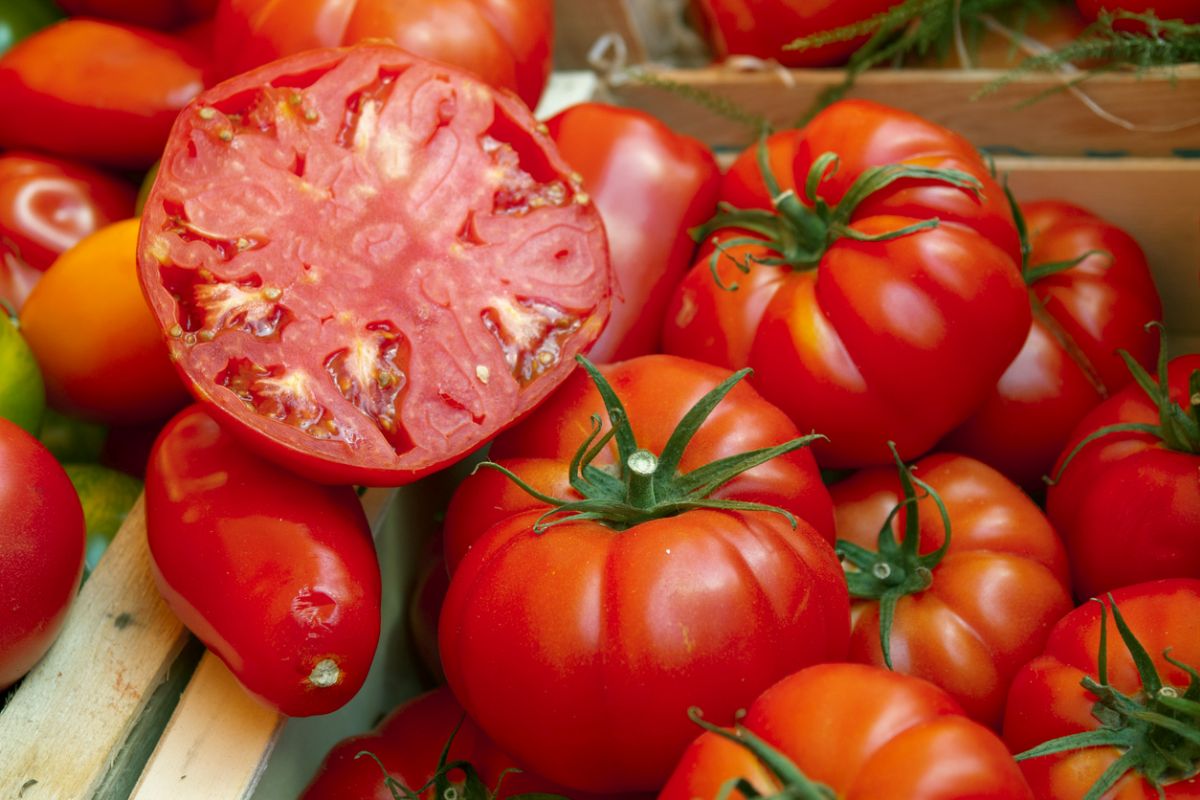
These are tomatoes that are ideal for slicing and have a firm texture when they are ripe, making them easy to slice into salads and so on. They are juicy and best enjoyed fresh.
Use them in
- Salads
- On sandwiches
- Salsas
These are tomatoes such as Green Beefsteak, Bushsteak, Big Rainbow, and Brandywine tomatoes.
Roma Tomatoes
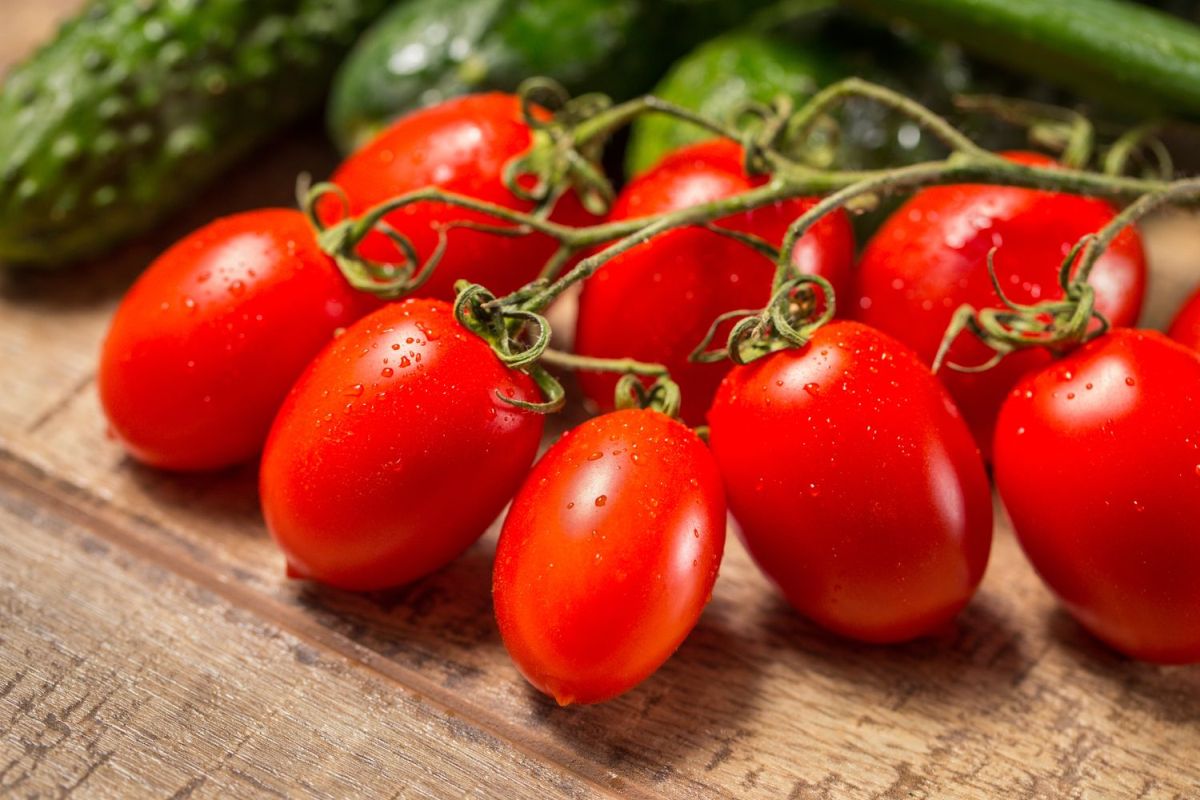
Roma tomatoes, also known as Plum or Paste tomatoes are best used in sauces or for dehydrated tomatoes. They have thick fleshy walls and small seed cavities, which also means they aren’t as juicy as slicing or cherry tomatoes.
They’re best used in
- Sauces or purees
- Salsas
- Dehydrated such as sundried tomatoes or powder
Common paste tomato varieties are Olpalka, Purple Russian, and Amish Paste.
Cherry or Grape Tomatoes
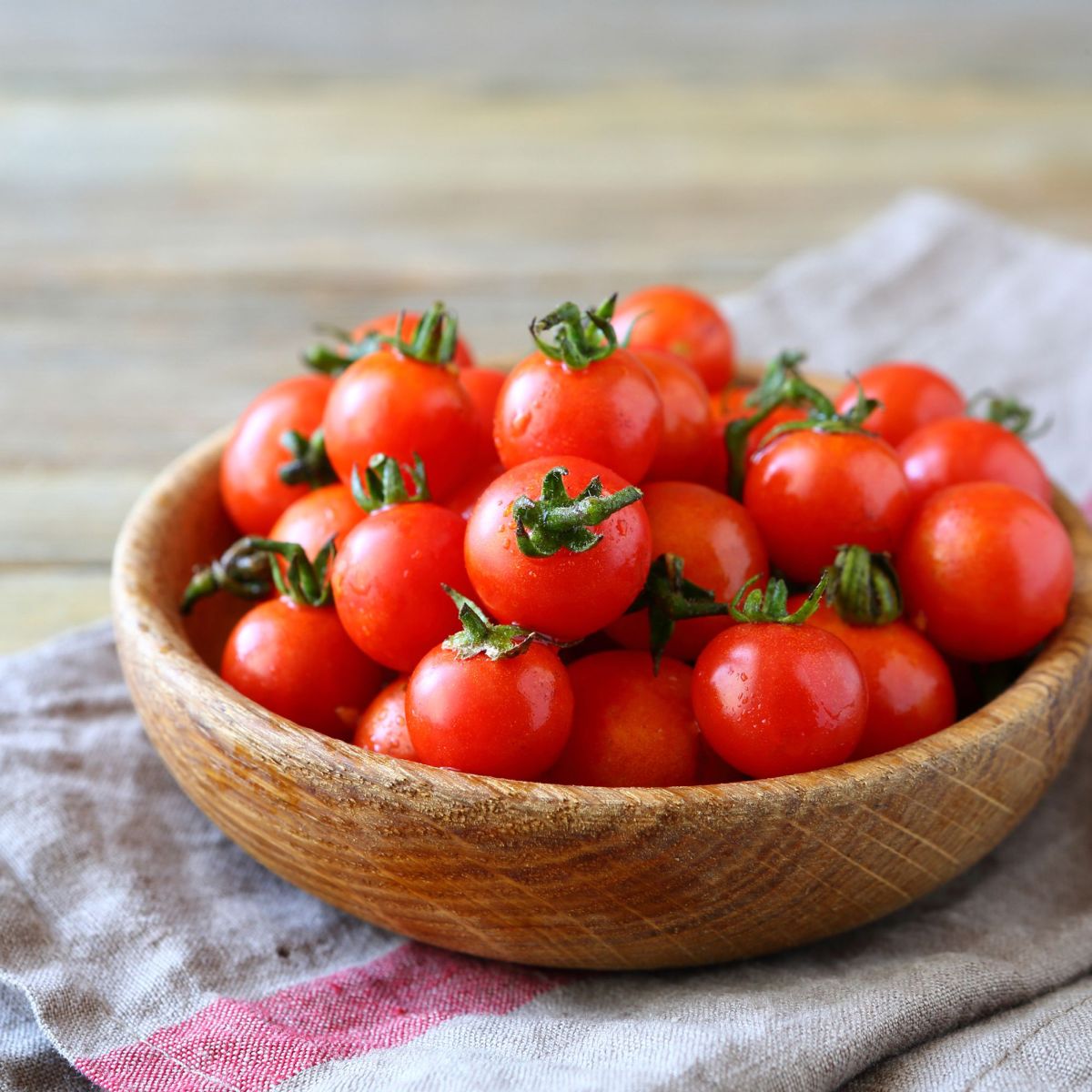
These are the smaller variety of tomatoes that grow on vines and are ideal for use in salads, grills, or even canning. They have a stronger ‘tomato’ taste and work well for canning since you can use them whole or sliced.
Use them in
- Salads
- Grills
- Pasta dishes
- Canning recipes
Pearly Pink, Black Cherry, and Sungold are some of the best grape or cherry tomatoes varieties.
20 Different Types of Tomatoes
Other than the styles of tomatoes, there are many types or varieties of tomatoes that are used in cooking.
Cherry or Grape Tomatoes
Even though this is a style of tomato, there are so many varieties in this category of tomatoes that most are just referred to as cherry tomatoes or grape tomatoes.
1. Sunrise Bumble Bee Tomatoes
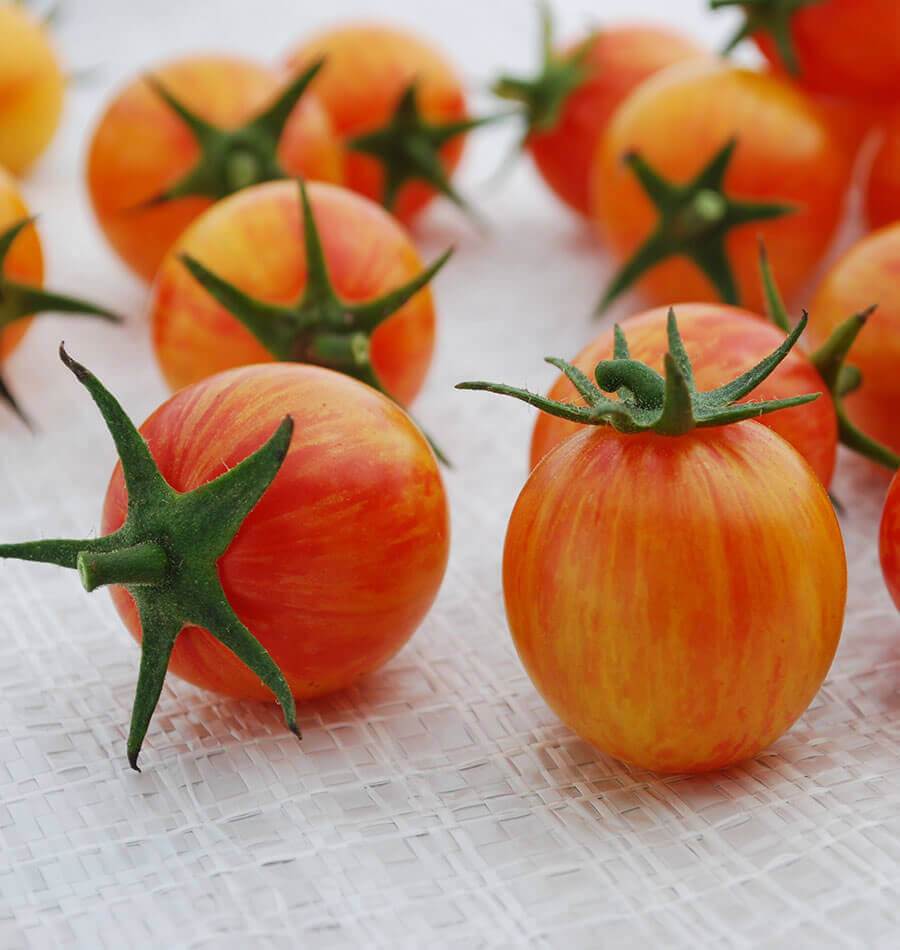
These orange tomatoes are indeterminate vining tomatoes that yield good harvests throughout the growing season. They have an attractive color and great taste.
Add them to a baked feta dish, like the recipe over at Lemons for Lulu, and remember fresh herbs. A delicious and attractive appetizer for summer.
2. Black Cherry
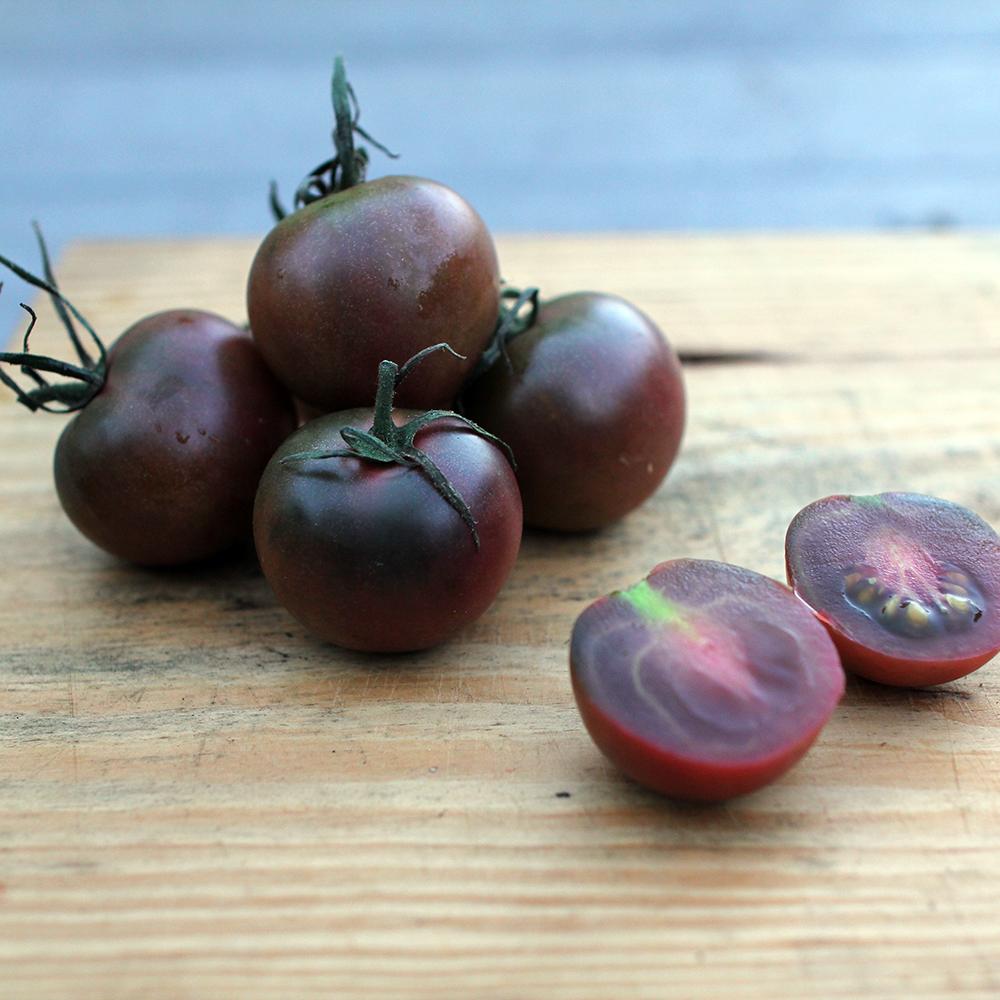
Black cherry tomatoes are very disease resistant and an heirloom type of tomato. It’s known more for its true tomato taste, than its sweetness. Use it in this Mediterranean pasta dish from Nutrition in the Kitch to make it extra rich tasting.
3. Sungold Tomatoes
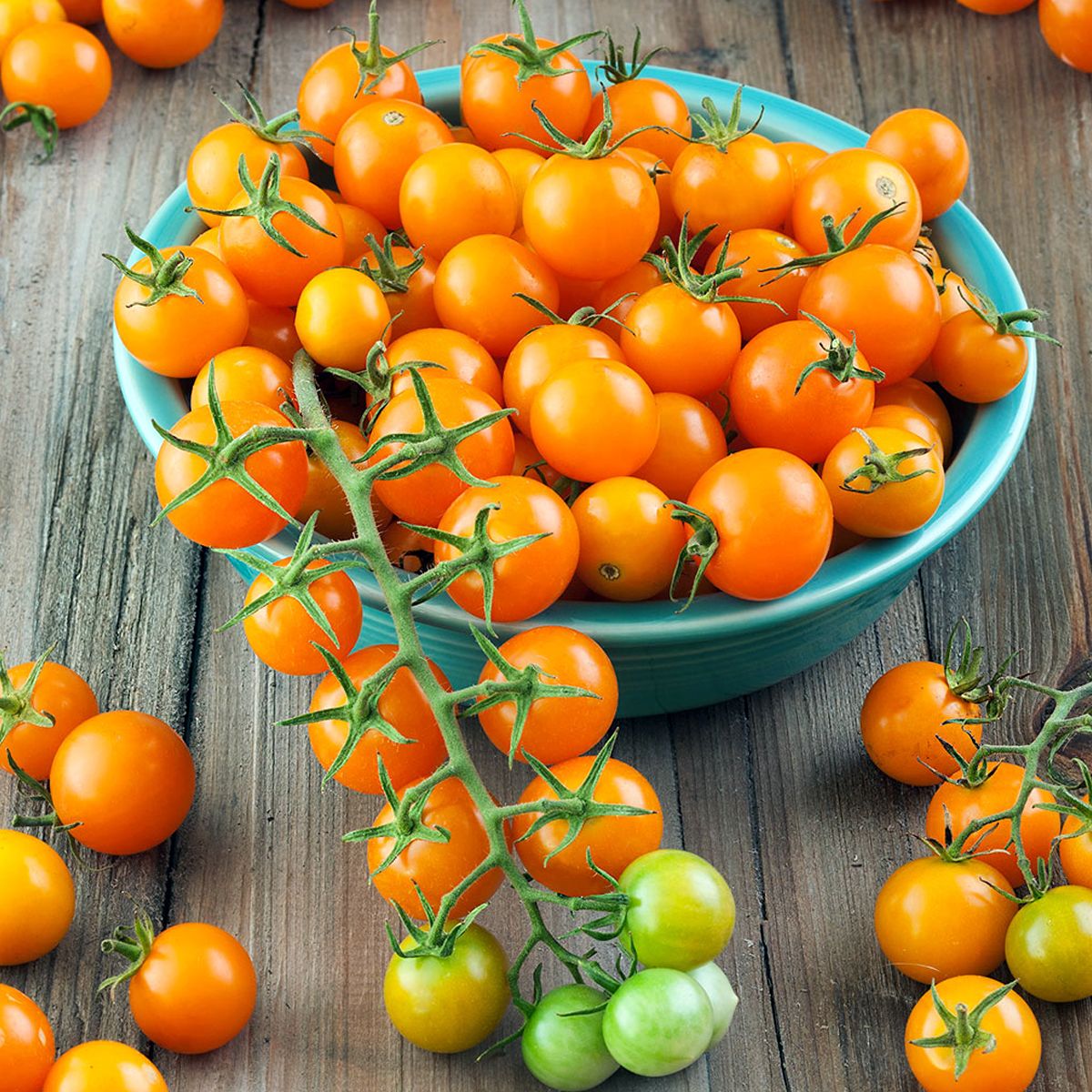
Sungold tomatoes are super sweet and almost candy-like, whilst they are enjoyed as a quick sweet snack, you can use them in some recipes as well.
Lemons for Lulu has a strawberry tomato bruschetta recipe and the Sungold will complement the sweetness of the strawberries well, so try them instead.
4. Isis Candy Tomatoes
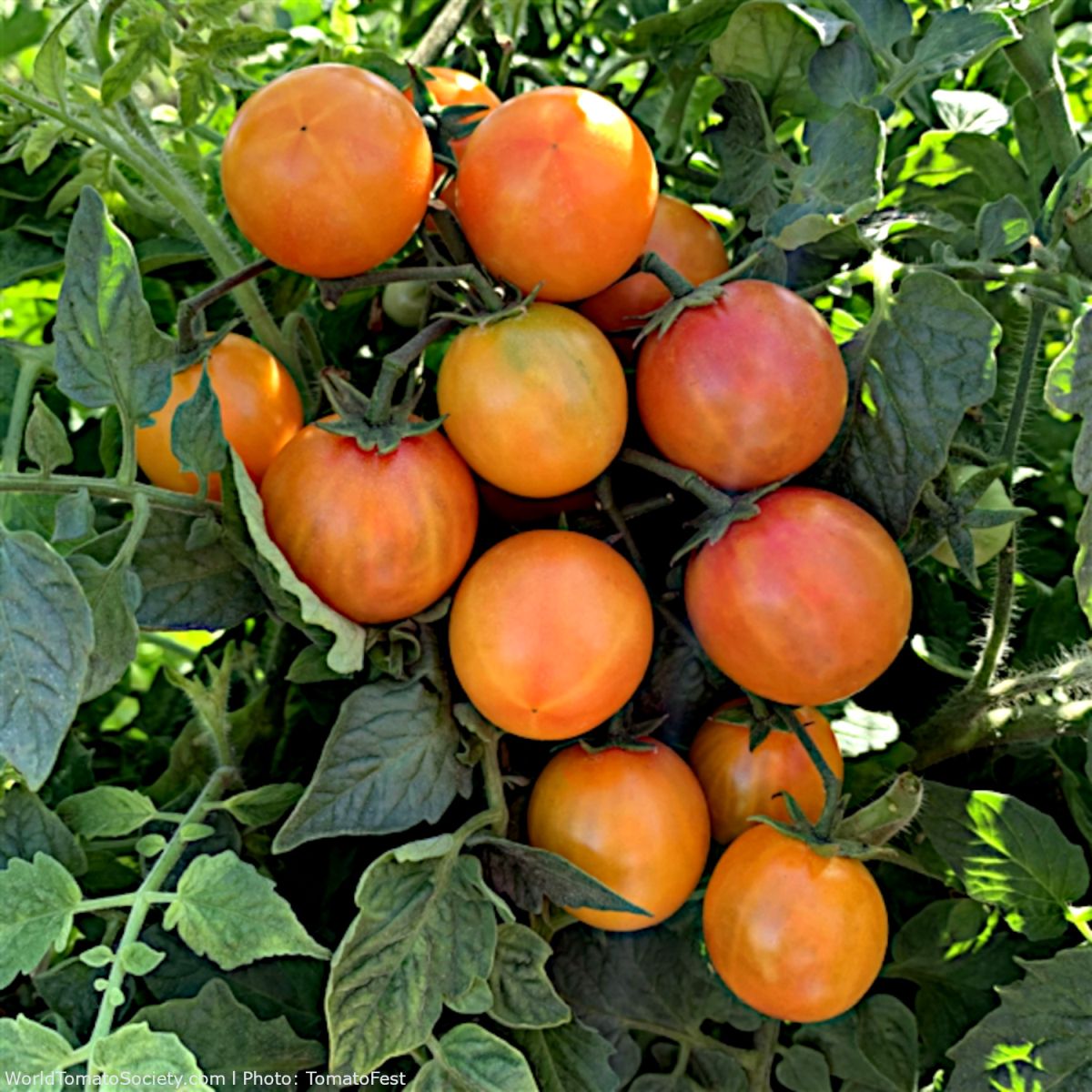
If you need a sweet and tasty cherry tomato, try growing or sourcing Isis Candy tomatoes for your next rainbow salad since they are sweet and best enjoyed fresh, you can find a recipe for this at Nutrition in the Kitch.
5. Sweet 100
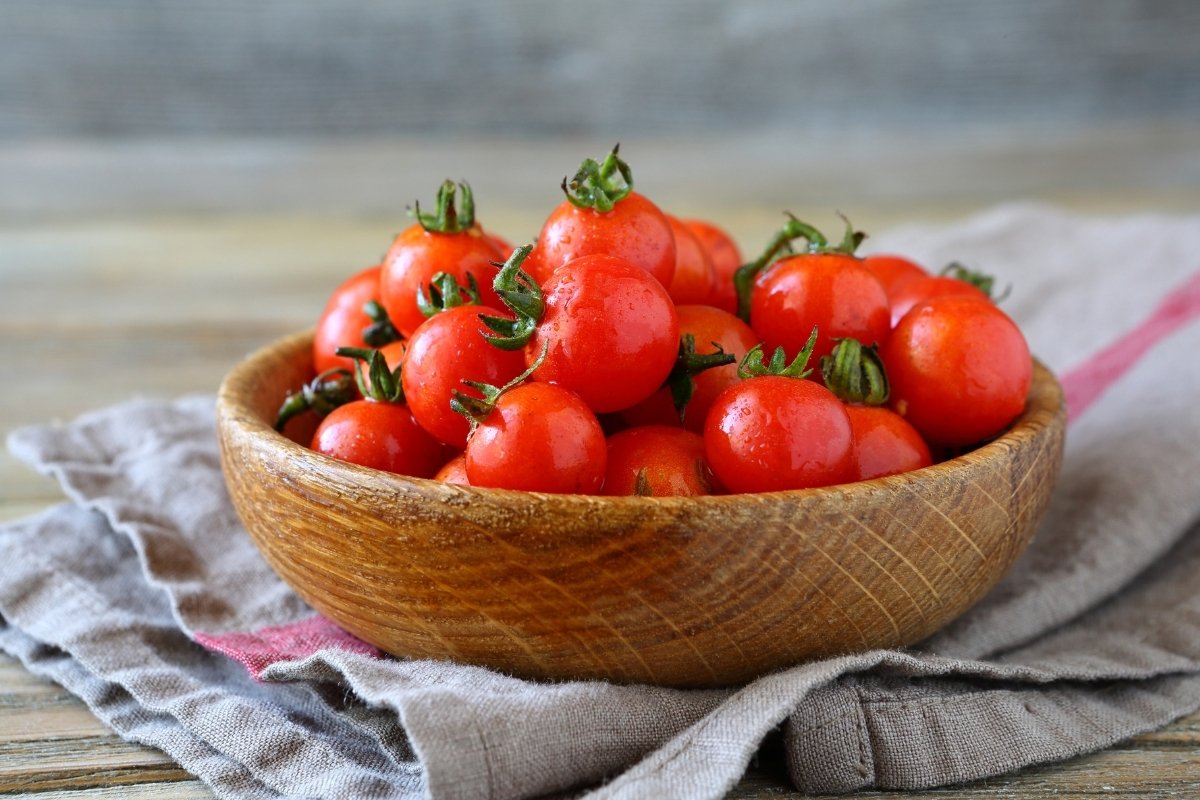
They grow on long trusses and yield large harvests in the growing season. They are sweet like their names suggest and have a lot of seeds inside. Use them generously in a tomato, basil, and white bean salad from Lively Kitchen.
Beefsteak Tomatoes
Beefsteak or slicing tomatoes are great in salads, soups, and grills since they are large and fleshy fruit with a lot of flavors.
6. Mortgage Lifter Tomato
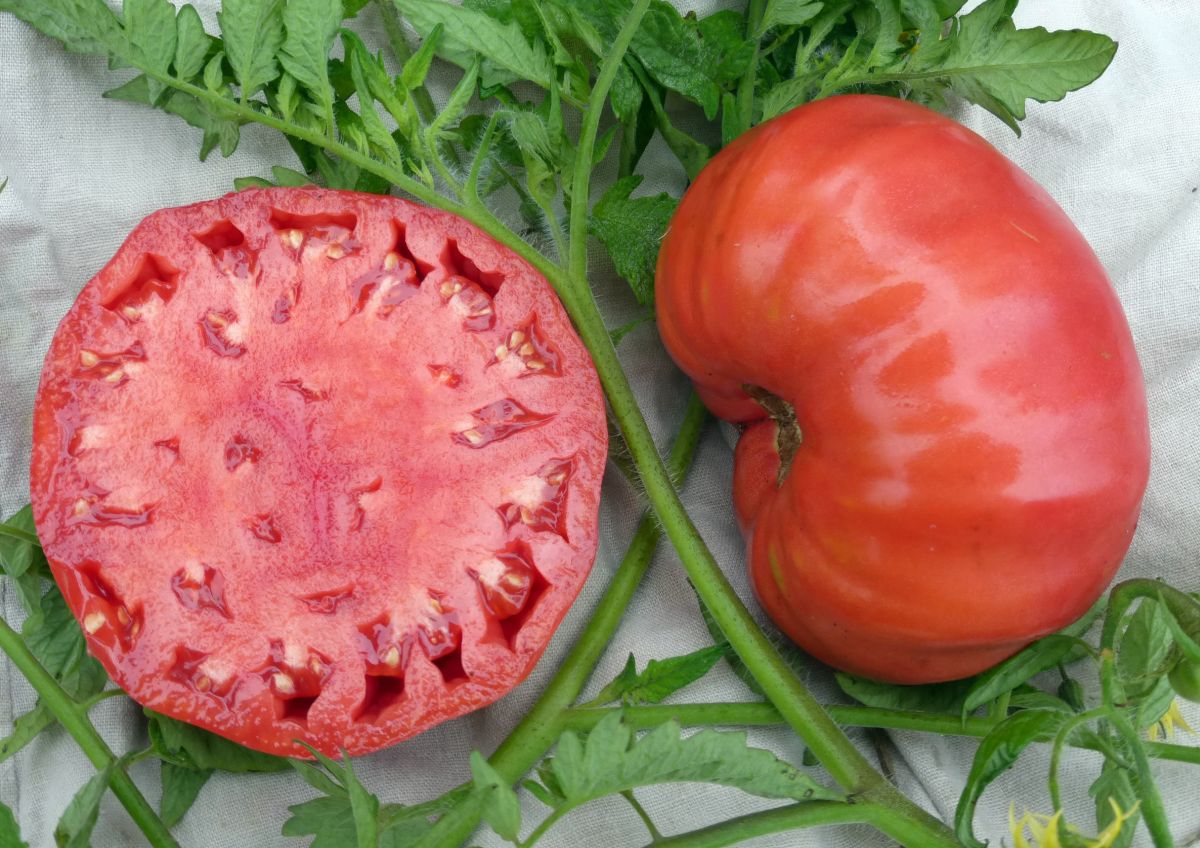
They get their name from the large size and the massive harvest they provide during the growing season. They are super meaty and do well in soups since these beefsteaks aren’t too juicy. Try them in a healthy tomato basil soup from Lively Kitchen.
7. Hillbilly Tomato
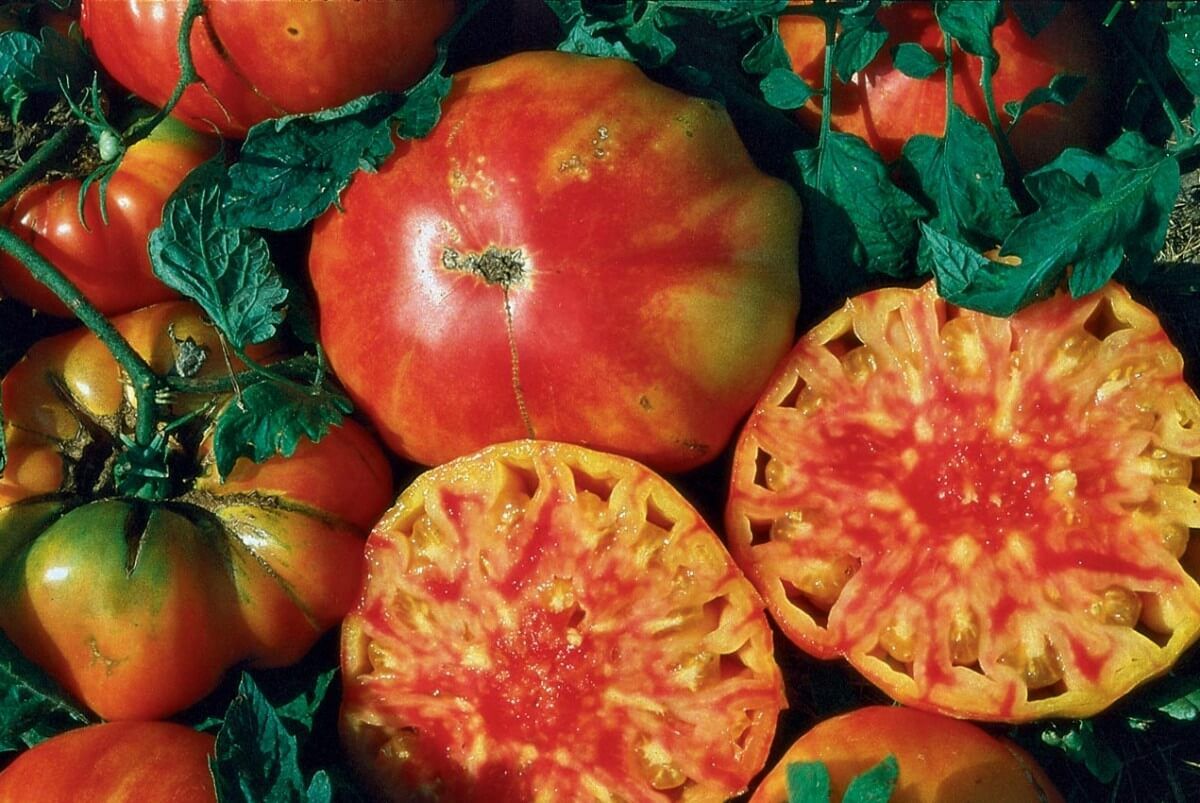
The Hillbilly tomato is an heirloom tomato that’s orange in color with gorgeous red streaks throughout the fruit. They are great for slicing and chopping for any recipe, and this Bloody Mary salsa from Lemons for Lulu will be an easy win due to their big size and great slicing qualities.
8. Cherokee Purple
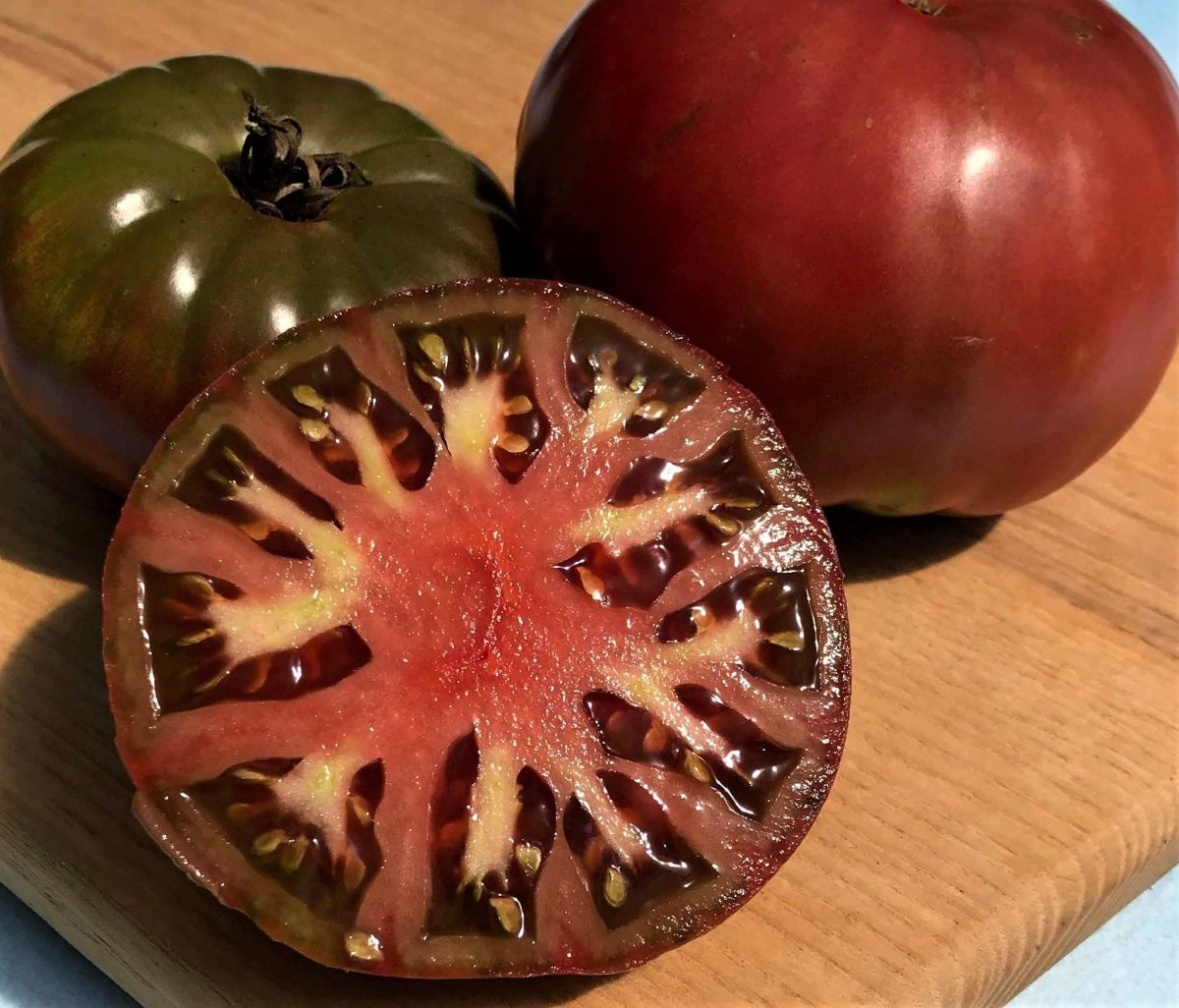
As their name suggests, these tomatoes are slightly purple and would be a great addition to any salad since they’ll add a beautiful pop of color.
Use them in these grilled tomato beet caprese stacks by Nutrition in the Kitch, to add a beautifully colored appetizer or side to your main meal.
9. Caspian Pink
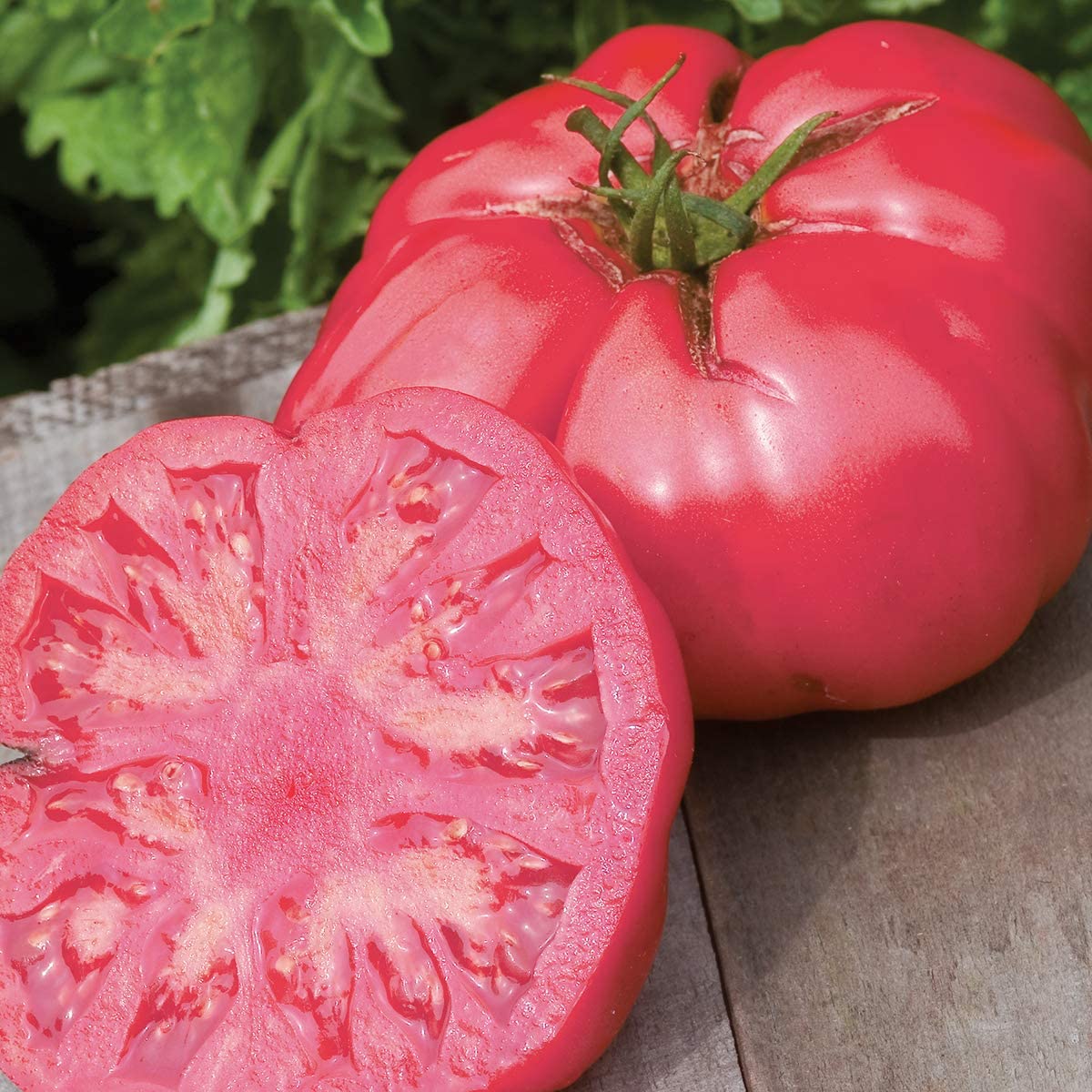
They originated in Russia and have a juicy, rich tomato taste due to their size. Whilst they aren’t bright pink, they do have a slightly pinker tint than other beefsteaks and are best used in sandwiches.
Try them in these Breakfast sandwiches by Lively Table, and add them fresh after defrosting.
10. Green Beefsteaks
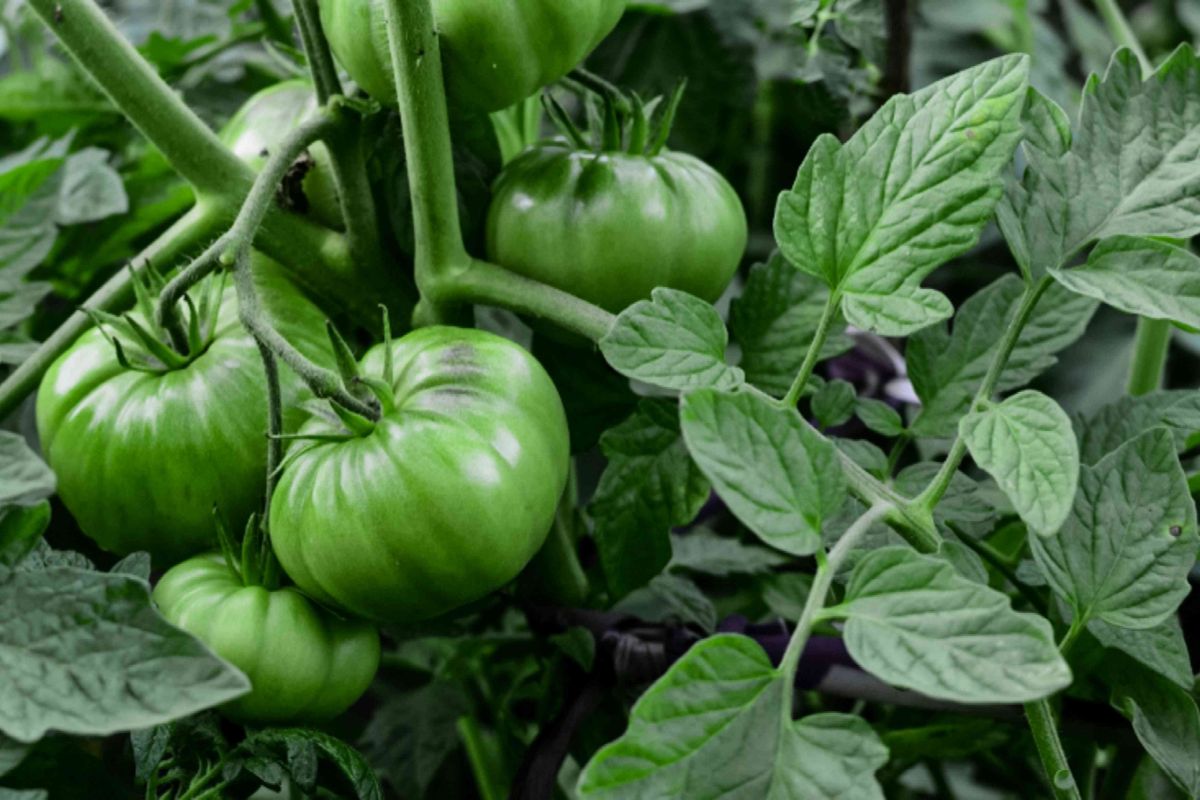
Green beefsteak tomatoes are unripe beefsteak tomatoes that are delicious when grilled or baked. They are much firmer when unripe, so it’s not super soggy when grilled. Try them out in these crumbed green tomato bakes by Lemons for Lulu.
Salad Tomatoes
Salad tomatoes are best enjoyed fresh and of course, in salads. But their juicy flesh also does well when canning them or using them in sauces.
11. Green Zebra
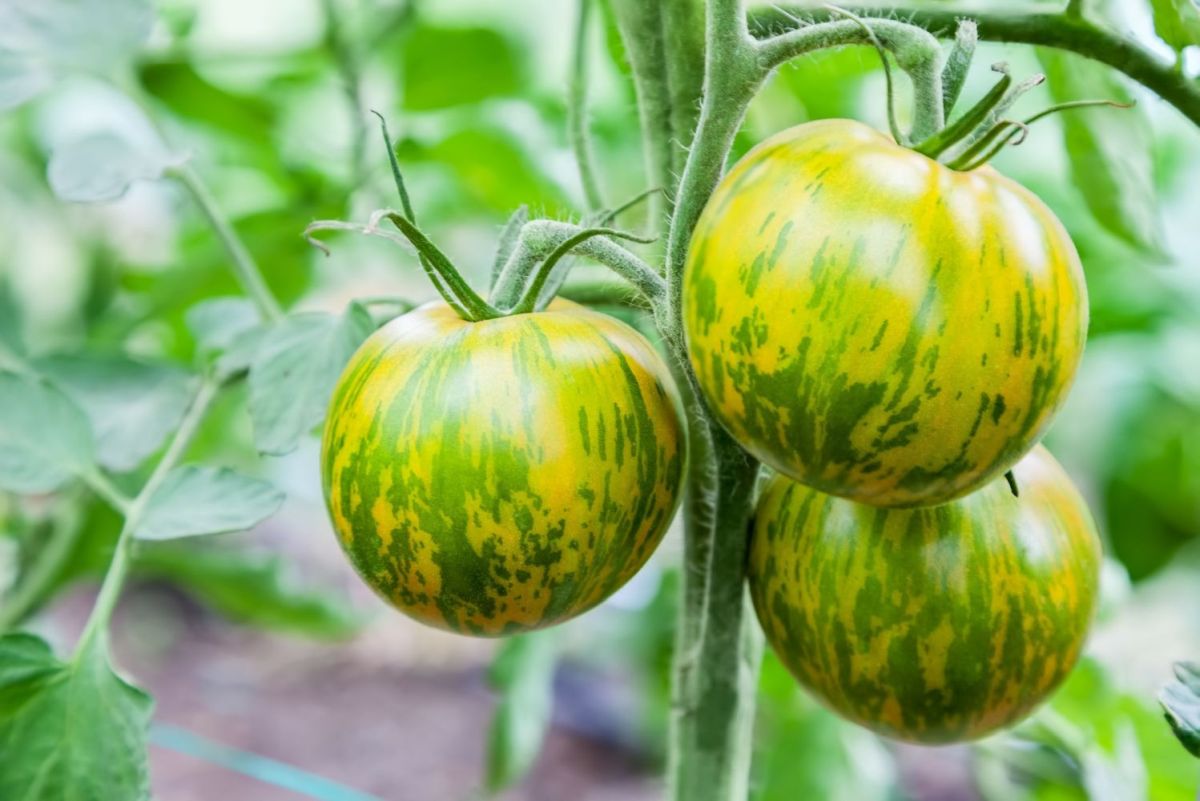
These are an exceptionally rare type of tomatoes that become yellow when they are ripe. They do grow easily, so attempt to grow your own from the saved seed.
Green Zebra tomatoes do great in this recipe for Watermelon Feta salad in place of the cherry tomatoes from Nutrition in the Kitch.
12. Pantano Romanesco Tomatoes
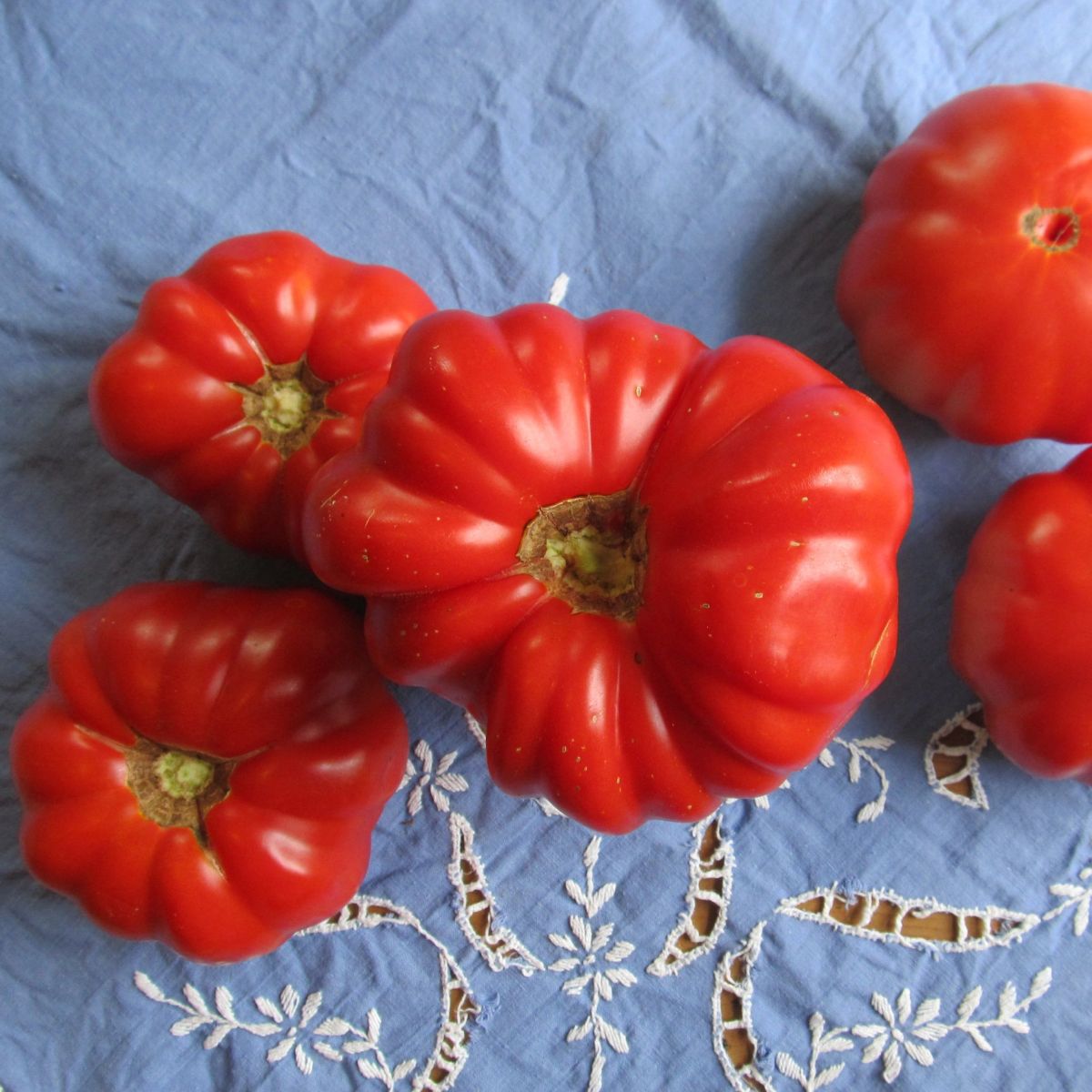
The Pantano romanesco is a wonderfully balanced tomato perfect for slicing or cooking and is an indeterminate heirloom tomato. They are great on toast, like this Pan Con Tomate from Lively kitchen.
13. Enchantment Tomatoes
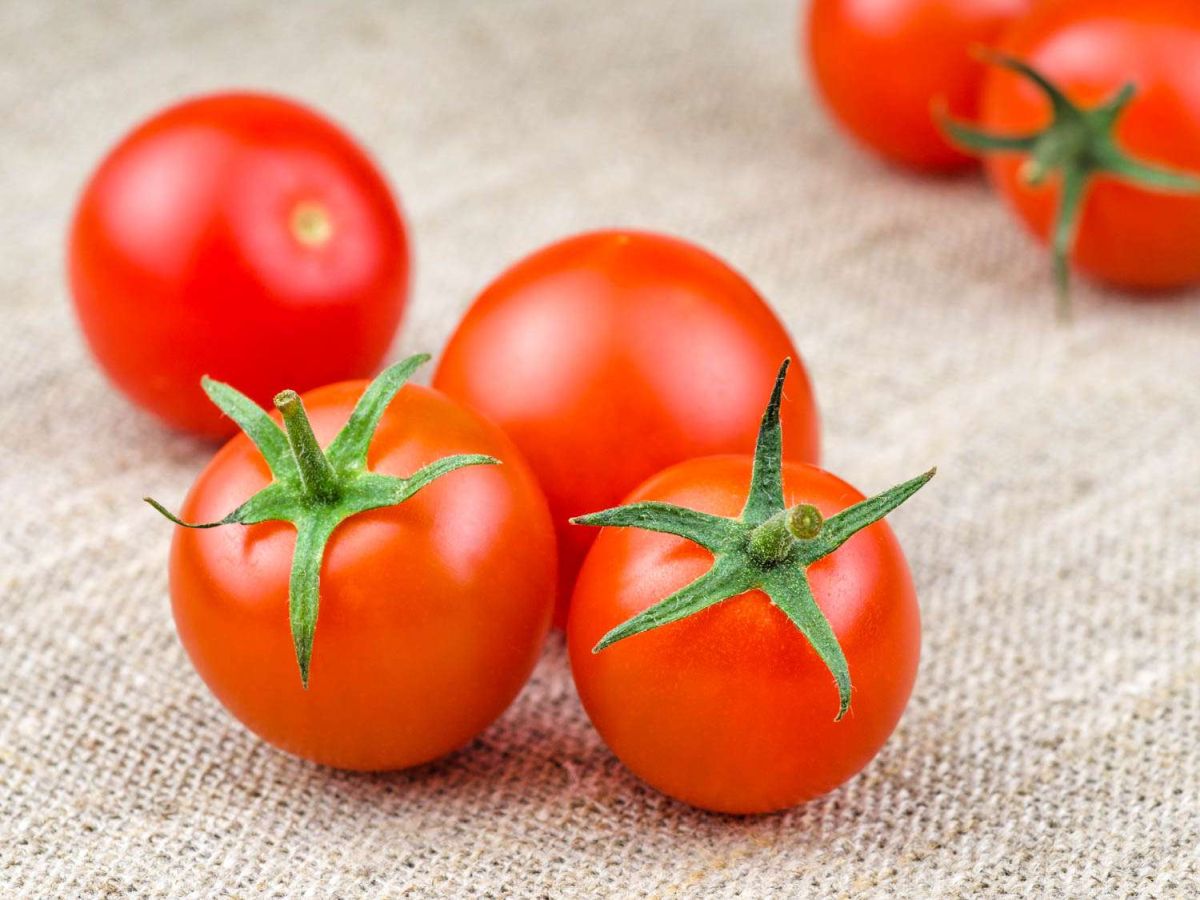
Enchantment tomatoes are versatile since they can be used for anything from sauces to slicing, they have a balanced taste and these Tuna Tomato Bites from Nutrition in the Kitare are ideal for this tomato.
14. Valencia Tomatoes
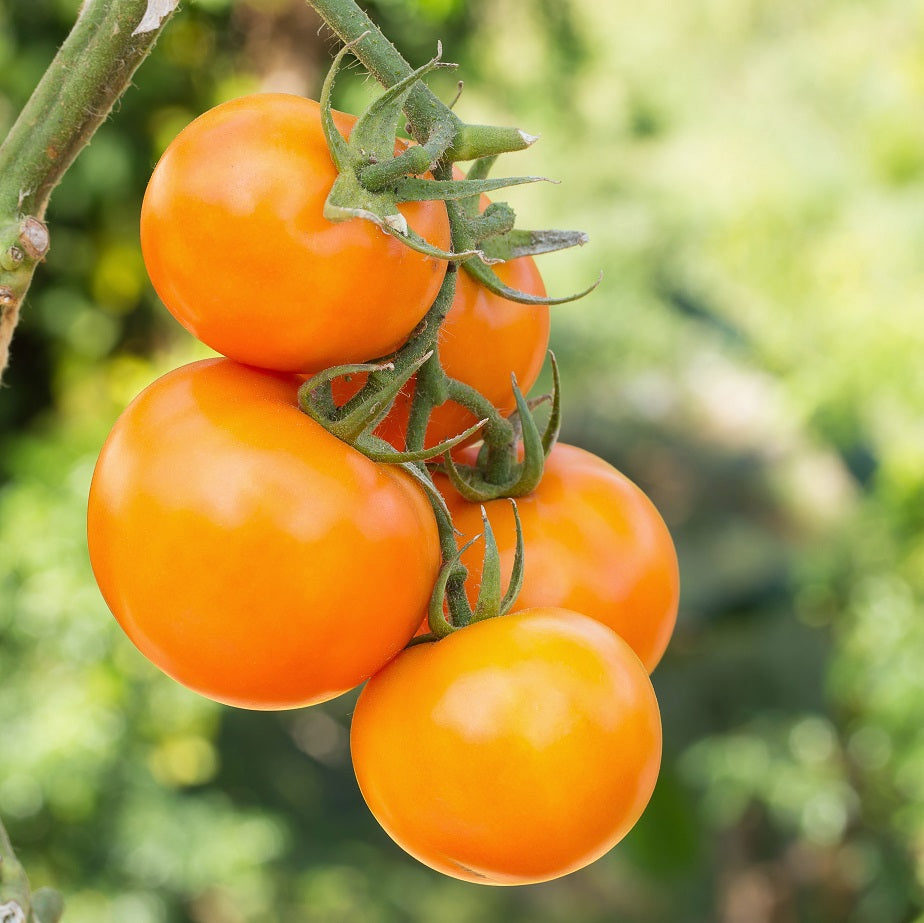
Valencia Tomatoes are juicy and sweet and are reminiscent of tropical fruits. They are orange and have ridges making them visually very appealing. Use them in this Eggplant Caprese salad from Lively Kitchen to show them off.
15. White Wonder Tomatoes
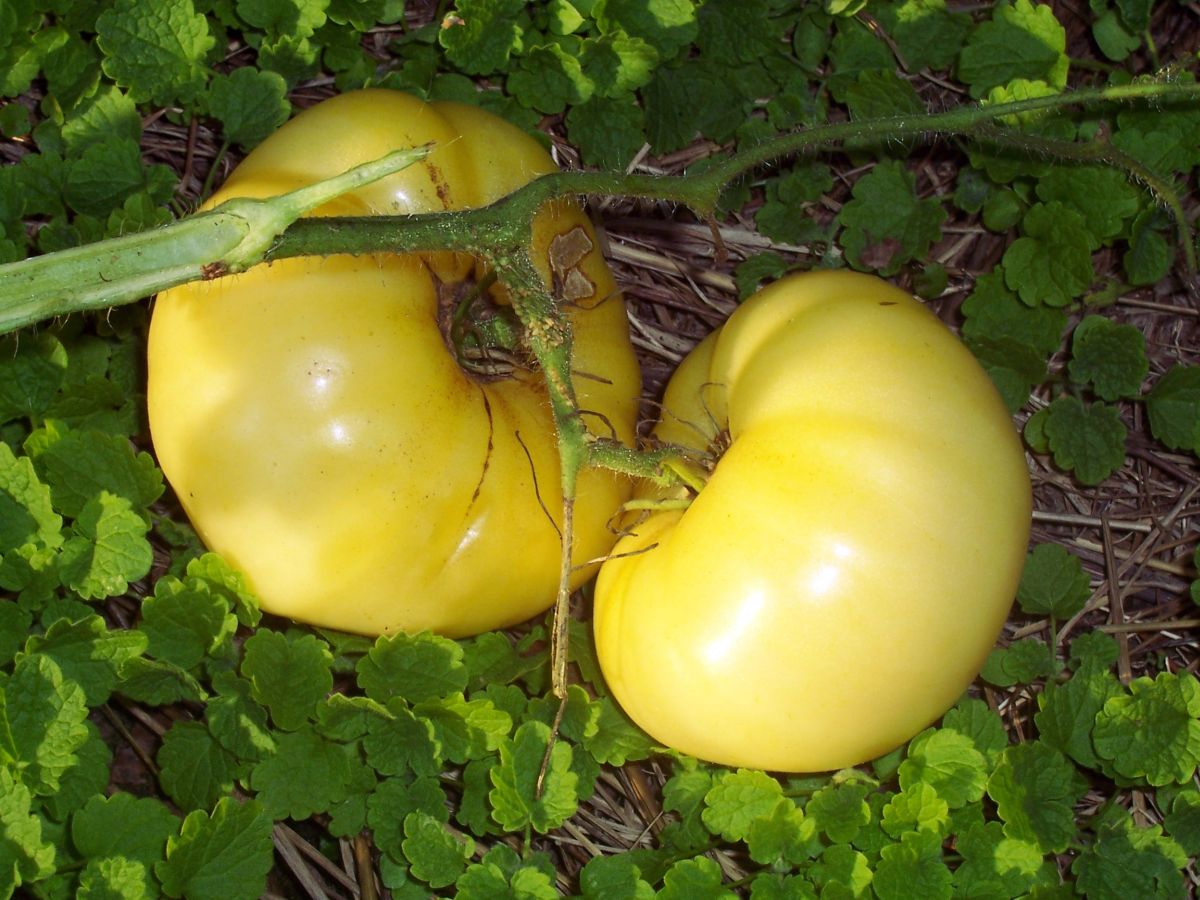
The color of these stunning tomatoes is from creamy white to light yellow. They are great in almost any application but best used in visually stimulating dishes to show off their colors, just like in these Aloha burgers from Nutrition in the Kitch.
Roma Tomatoes
Roma or plum tomatoes are commonly also known as paste tomatoes, known for their low water content, which makes them ideal for making tomato paste, and sauces. They are packed with flavor and usually bright red.
16. Big Mama Tomato
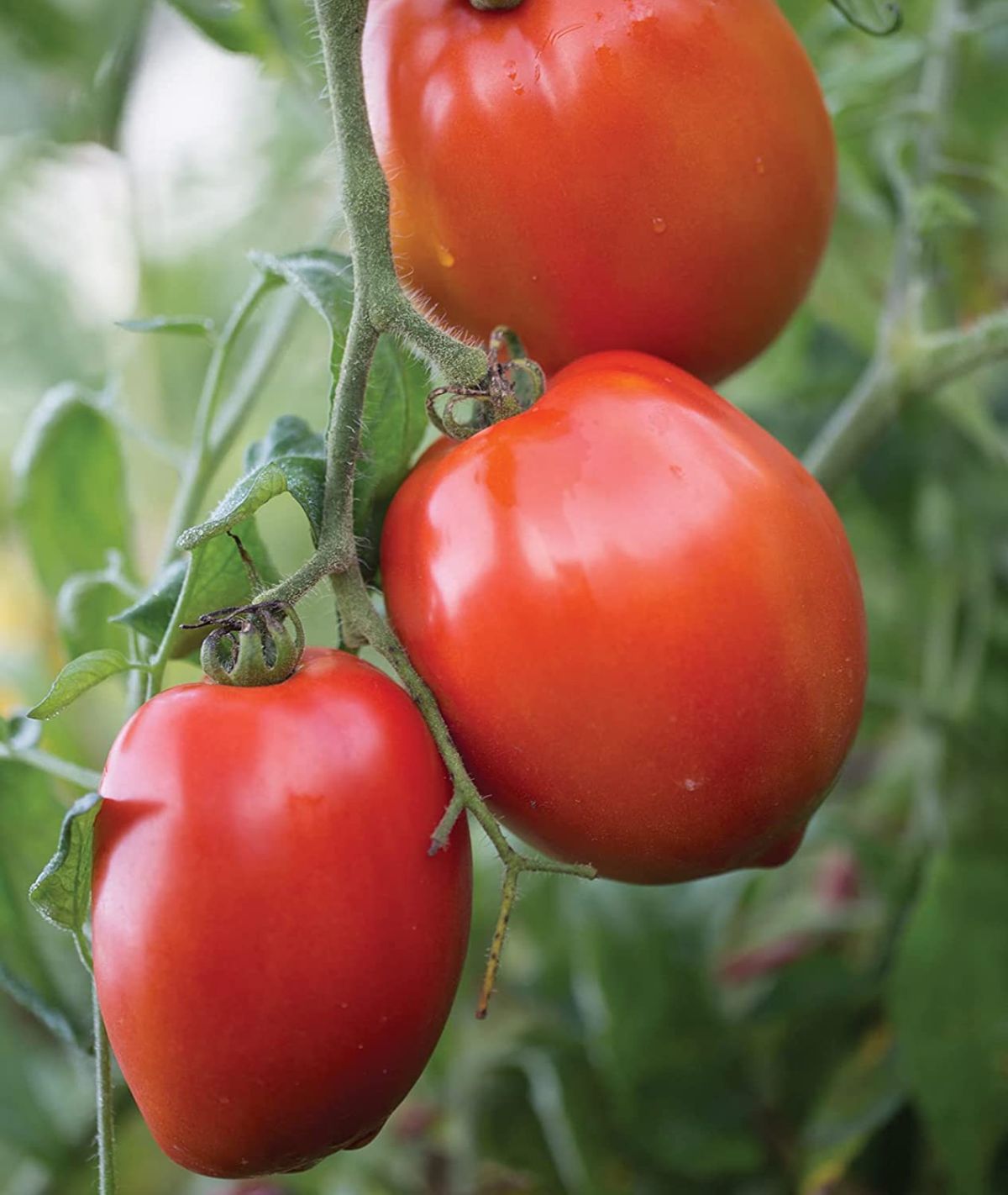
They get their name from their size since they can grow up to 5 inches in diameter. They are ideal in sauces and very commonly grown for this reason. Try this fresh tomato marinara sauce recipe by Five Heart Home.
17. King Humbert Tomato
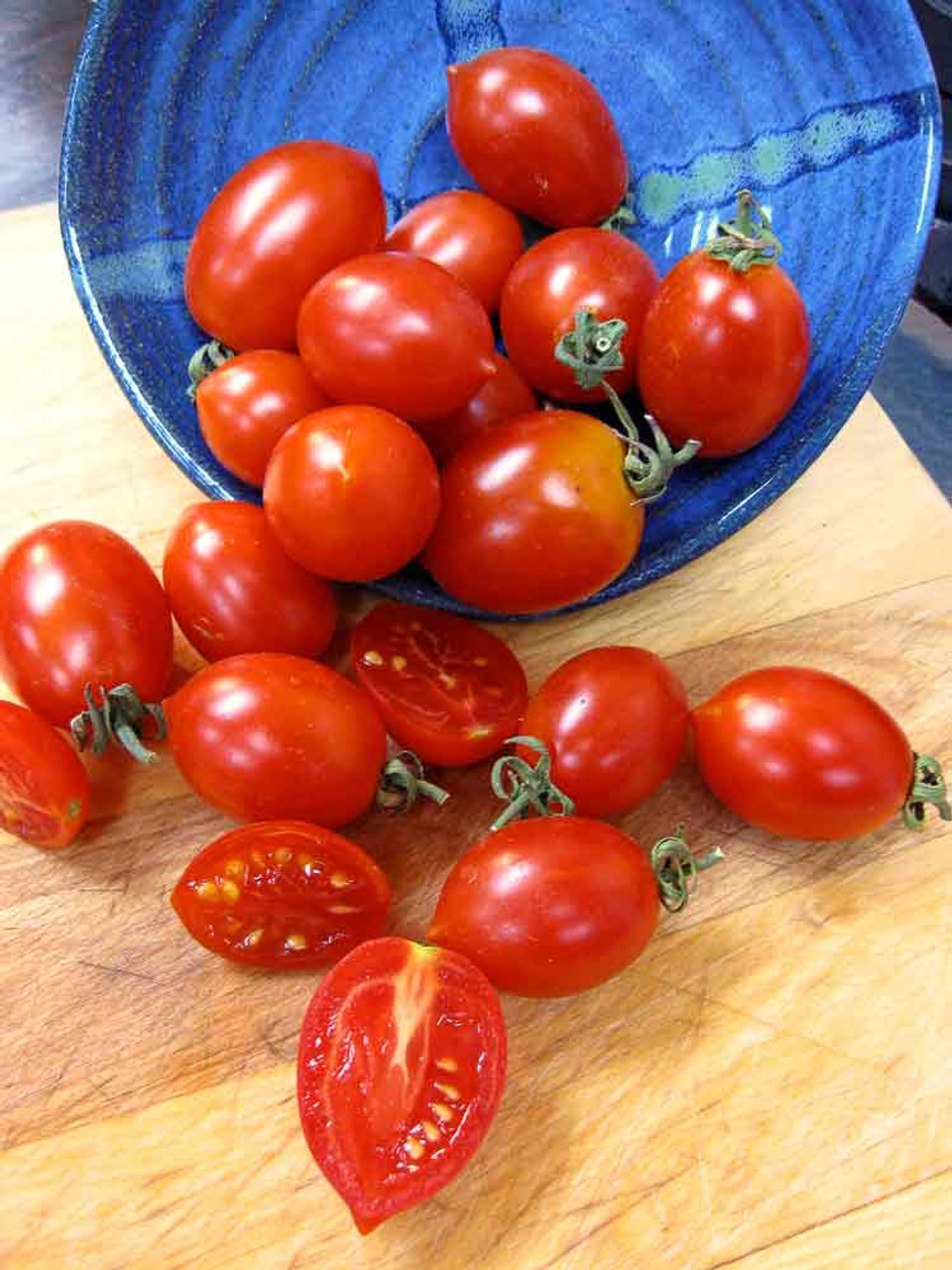
King Humberts are great for using in a sauce or drying since they have a deep tomato taste. If you are sun-drying them, use them in this healthy broccoli and sundried tomato pasta dish by Lively Kitchen.
18. Orange Banana Tomato
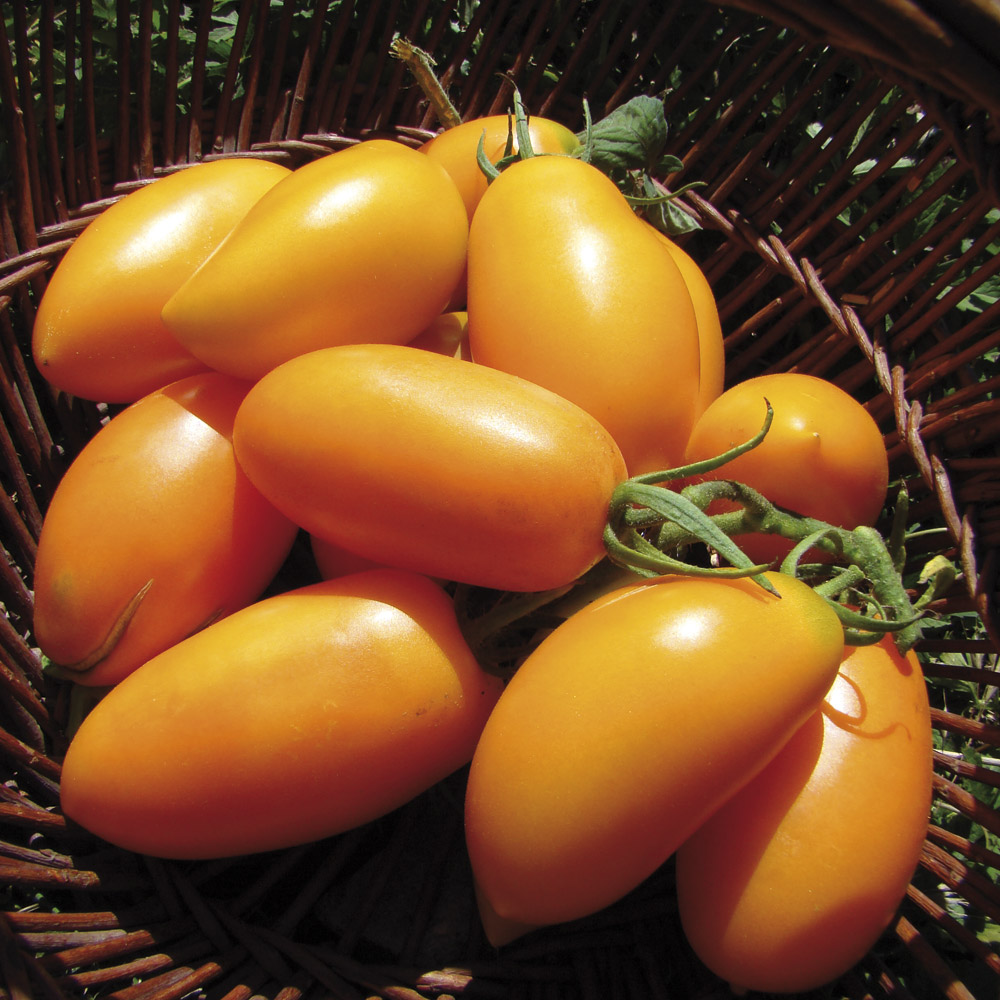
They are great tinned, fresh, dried, and even sundried and preserved in oil, so use them as you wish on this best-ever turkey sandwich by Nutrition in the Kitch. They have a sweet fruity flavor to them.
19. San Marzano Tomatoes
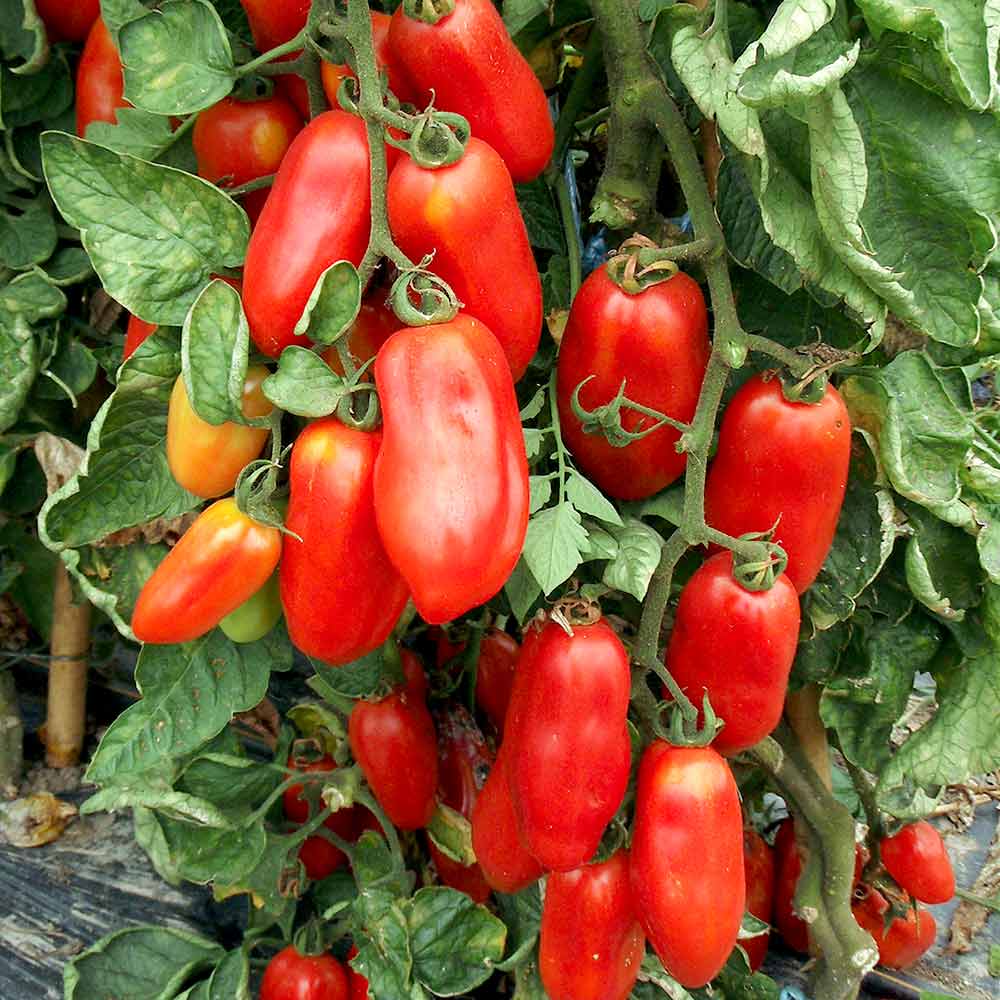
San Marzano tomatoes are the most commonly used tomato when canning, they are oblong and the plants produce plenty of fruit. Learn how to can tomatoes over at All Recipes.
20. Speckled Roman Paste Tomatoes
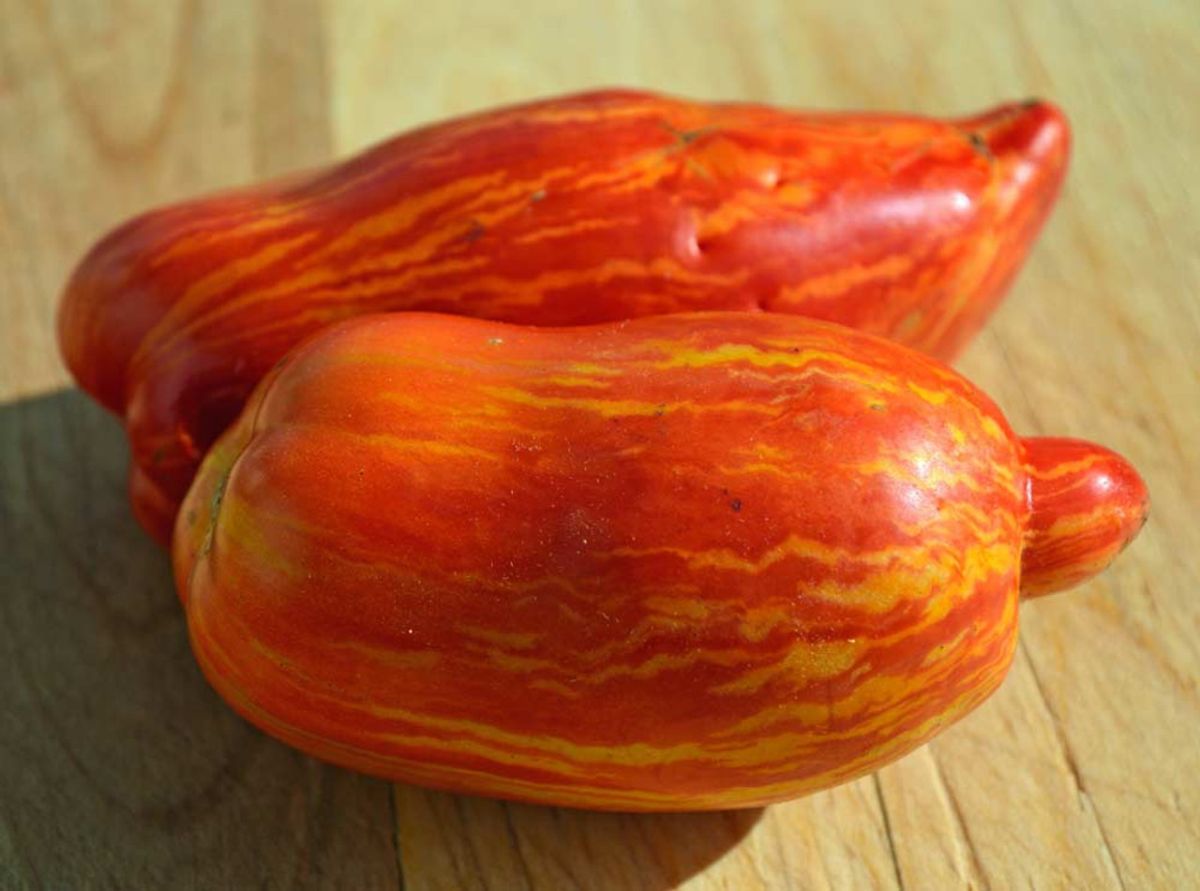
Oblong and with a tip, these tomatoes are loved since they can be prepared so easily. Try your hand at making some tomato paste with this recipe by Give Recipe.
The Best Tomatoes for Different Recipes
Knowing that there are many different types of tomatoes to choose from, it might get overwhelming, here are some common and interesting tomatoes for you to use in different recipes.
Canning
Any common Roma tomato will work great for any canning recipe, as they are fleshy with low amounts of seeds, but you can use any type of tomato with a low amount of seeds.
Soups
You would ideally want to use a tomato that you would use for sauces or canning, such as Roma or San Marzano since they have low seed amounts and a potent tomato taste.
Sauces
San Marzano tomatoes are best used in sauces since they haw a low water content and a deep rich tomato flavor. They are becoming more readily available at farmers’ markets and they are easy to grow from seeds.
Salsas
For salsas you want a firm and almost crunchy tomato to achieve a good texture for the salsa. You don’t want to spend hours cutting up small tomatoes, so opt for a large low seed variety of tomatoes or any beefsteak variety.
Chili
Chilli is usually made from canned tomatoes. You can use any tomato like Roma to achieve the desired texture. But also remember that traditionally chili was made from whatever is available.
So use any variety of tomatoes, can them, and enjoy them in your homemade chili.
Salads
Salads usually call for sliced tomatoes or cherry tomatoes, if you are looking for sliced tomatoes in your salad, go for a firm texture tomato that is large enough for you to easily slice, else halve your favorite variety of cherry tomatoes.
Sandwiches
You often find tomato on sandwiches, from turkey on rye, to the classic BLT. Slicing tomatoes are ideal for this so use any beefsteak or a larger variety of tomato with a firm texture.
Side Effects of Eating Tomatoes
Tomatoes are regularly enjoyed in a variety of dishes and sauces, but they do come with some common side effects such as
- Heartburn or Acid Reflux. They are highly acidic and may disrupt the acidity in your stomach.
- Allergic Reactions. They contain histamine, a common component that triggers allergic reactions after being eaten, or in rare cases, contact dermatitis when the fruit is touched.
- Kidney Problems. Patients with advanced kidney disease are often advised to limit their intake of fruit since it is high in potassium.
- Irritable bowel syndrome. The fruit is often linked to foods that trigger inflammation in the bowels.
However, these symptoms are rare and only appear in individuals that have other underlying problems, eating them as a healthy person in moderation should do you no harm.
Facts about Types of Tomatoes
There are a few interesting facts you might not have known about tomatoes until now
- There are over 10,000 varieties of tomatoes.
- Tomatoes have been to space.
- The first tomatoes ever found were considered gold and an aphrodisiac.
- Tomatoes are not always red.
- Spain has an annual tomato festival where 150,000 people come together to celebrate the fruit and then throw it at each other.
Types of Tomatoes FAQ
What are the Most Popular Types of Tomatoes?
Globe tomatoes are considered to be one of the most common tomatoes, as they are considered a great all-purpose tomato.
What are the Easiest Types of Tomatoes to Grow?
The easiest tomato to grow depends on what climate you live in, but the super sweet 100 has been a great disease-resistant variety tomato to grow that produces a lot of tomatoes from one single plant.
Others that are easy to plant are Sungold, Golden Pear, and Golden Nugget.
How Many Types of Tomatoes Are There?
There are currently over 10,000 varieties of tomato known in the world.
What Is the Most Expensive Tomato?
The red ruby cherry tomatoes come in at about $12 a punnet. It is said to be super tasty and explodes with flavor in your mouth.
What are the Healthiest Types of Tomatoes to Eat?
There isn’t a specific variety of tomatoes that is healthier than the others, as they all provide a good amount of nutrition. However, heirloom varieties of tomatoes are considered to be the healthiest since they aren’t genetically modified and tend to have the highest amount of antioxidants.
Who Should Avoid Eating Types of Tomatoes?
Anyone who has tomato intolerance should avoid them, including those with kidney disease because of the high potassium levels. People with IBS should also steer clear of tomatoes due to the inflammation they can cause in their bowels.
In addition, it is recommended that anyone struggling with heartburn or acid reflux should not consume tomatoes either since the fruit is quite acidic.
Types of Tomatoes Conclusion
With over 10,000 types of tomatoes, you will never be left without a choice. From sweet and tasty cherry tomatoes to massive beefsteak tomatoes, there is a recipe and preparation method to make the best of these healthy and visually appealing fruits.
They are easy to grow and if you ever have a spot open in your garden, why not try saving the seeds from your favorite tomato and plant some of your own, they always taste even better when grown yourself.
